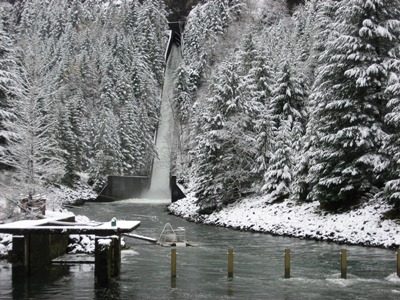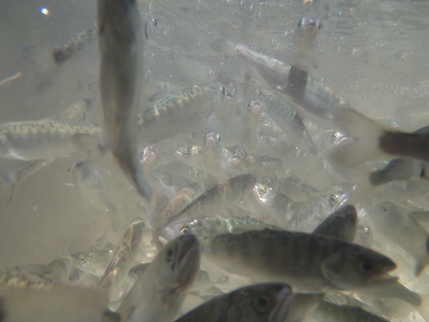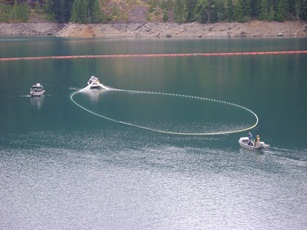Willamette Reservoir Research
The Willamette Reservoir Research Project was developed to answer questions that will assist, inform and guide management decisions related to measures listed within the Willamette Project Biological Opinion (BiOp) to improve downstream passage for juvenile salmonids through reservoirs and dams in the basin. The project is divided into two investigative sections, 1) Salmonid out-migration monitoring and 2) Salmonid life-history in reservoirs.
The BiOp concluded that continued operation and maintenance of the Willamette Valley Project, which consists of 13 dams operated by the US Army Corps of Engineers, would jeopardize the existence of Upper Willamette River spring Chinook salmon Oncorhynchus tshawytscha and Upper Willamette River steelhead O. mykiss (NMFS 2008). Reasonable and Prudent Alternative (RPA) measures identified in the BiOp to address downstream fish passage include: passage improvements at dams; head-of-reservoir juvenile collection facilities; and reservoir operation modifications to improve conveyance of juvenile fish through reservoirs. The feasibility of any of these proposed measures is contingent upon a basic understanding of how juvenile fish use reservoir habitat, including migration timing and size of fish entering and exiting reservoirs, distribution of reservoir-rearing juveniles, growth rates, predation risks, and disease and parasite risks. In addition, this project will help gauge the success of the ongoing adult outplanting program above dams.


